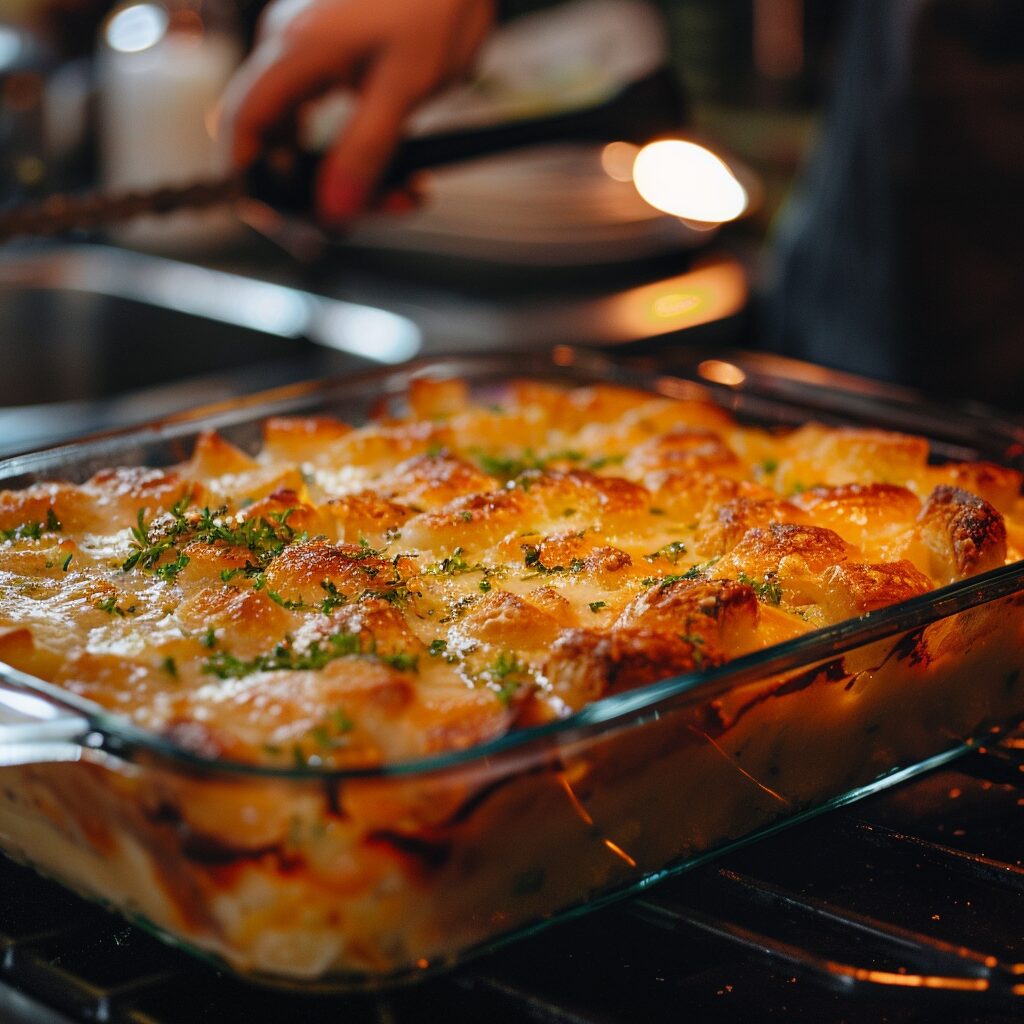We’ve all been there, standing in the kitchen, following a seemingly foolproof recipe to the letter, yet the end product looks nothing like what’s promised. Casseroles, the quintessential comfort food, are notorious for being “easy,” yet many of us fall into traps that turn these simple dishes into culinary nightmares. Let’s dive into the common blunders that could be sabotaging your casserole, and how to avoid them.
1. Choosing the Wrong Baking Dish
The foundation of a great casserole begins with the right container. Using an inappropriate size or material can lead to undercooked or overcooked meals. The correct dish not only matches the recipe’s needs but also ensures even cooking. Remember, too big and your ingredients dry out; too small, and you’ll have an overflow mess in your oven.
Material matters as well. Glass and ceramic dishes are ideal for evenly distributing heat, while metal pans can cause certain areas to cook faster than others, leading to an uneven bake. Additionally, ensure your dish is oven-safe to avoid a kitchen disaster.
Before you start layering those ingredients, take a moment to consider if your dish is up to the task. It might seem like a minor detail, but it has a major impact on the success of your casserole.
2. Not Pre-cooking Ingredients
One of the cardinal sins of casserole making is assembling it with raw ingredients, expecting them to cook perfectly in the oven. This often results in unevenly cooked components or, worse, a dish where some parts are overdone while others remain stubbornly uncooked. The trick is to partially cook many of your ingredients beforehand.
Vegetables should be sautéed or steamed to remove excess water and ensure they’re tender. Pasta and rice benefit from being slightly undercooked on the stovetop since they continue cooking in the oven. And don’t forget to brown your meats, not just for safety but for that deep, savory flavor it adds to your dish.
Skipping this step might save you a few minutes upfront, but it could doom your casserole to being a disappointing, unevenly cooked mess.
3. Forgetting to Drain Wet Vegetables
Wet vegetables are the arch-nemesis of the perfect casserole. Adding them without proper draining can lead to a soggy, unappealing final product. It’s essential to drain excess moisture from vegetables like zucchini, mushrooms, and tomatoes before they find their way into your dish.
Salting and letting them sit for a few minutes can draw out moisture, which can then be dabbed away with a paper towel. Alternatively, a quick sauté can also reduce their water content while adding an extra layer of flavor.
This might seem like an extra step, but it’s the difference between a casserole that’s perfectly cohesive and one that’s disappointingly watery.
4. Skimping on Seasoning
A bland casserole is a sad casserole. Many home cooks forget that ingredients like pasta, rice, and potatoes absorb a lot of salt, and what might seem like a generous amount of seasoning before cooking can end up being barely noticeable. It’s crucial to season generously and taste your mixture before it goes into the oven.
Remember, dried herbs and spices often need a bit more time to release their flavors, so adding them during the initial cooking stages is a good idea. However, fresh herbs are best added towards the end or as a garnish to preserve their freshness and vibrant color.
Don’t let your casserole fall flat on flavor. A little extra seasoning can transform it from mundane to mouthwatering.
5. Incorrect Oven Temperature
Too hot or too cold, the wrong oven temperature can ruin your casserole. Cooking at too high a temperature can lead to a burnt exterior while leaving the inside undercooked. Conversely, too low a temperature might result in a casserole that never quite reaches that coveted, bubbly perfection. The ideal range is usually between 300 to 400°F, depending on the recipe.
It’s also worth noting that oven temperatures can vary, so knowing your oven’s quirks can help. An oven thermometer is a great tool to ensure you’re cooking at the right temperature, regardless of what the dial says.
Respect the recipe’s recommended temperature, and you’ll be well on your way to a perfectly baked casserole.
6. Neglecting the Topping
A crunchy, golden topping is often the crowning glory of a casserole, but it’s an element frequently mishandled. Applying your topping too early can lead to it becoming burnt or soggy. The key is to add breadcrumbs, cheese, or fried onions towards the end of the cooking process.
This timing allows the casserole itself to cook thoroughly without the topping overshadowing the rest of the dish. If you notice the topping browning too quickly, cover the dish with foil to protect it while the rest continues to bake.
With the right timing, your topping can go from a burnt afterthought to the star of the show.
7. Improper Storage
Last but not least, how you store your casserole can make or break its future enjoyment. Freezing or refrigerating a casserole improperly can lead to a mushy, unappetizing mess upon reheating. Ensure your casserole is cooled completely before wrapping it tightly to prevent freezer burn or moisture buildup.
When ready to reheat, thawing in the refrigerator before baking or microwaving will help maintain its texture and flavor. Remember, some casseroles reheat better than others, so consider this when choosing recipes for make-ahead meals.
Proper storage not only saves your leftovers from becoming food waste but also ensures that your casserole remains a delicious option for days to come.
In conclusion, while casseroles may seem like a simple dump-and-bake affair, the devil is in the details. Avoiding these common mistakes can mean the difference between a forgettable dish and a memorable meal. With a bit of forethought and attention to detail, you can elevate your casserole game and impress even the most discerning of diners. Remember, the best casseroles are made with love, a dash of creativity, and a pinch of culinary wisdom.

